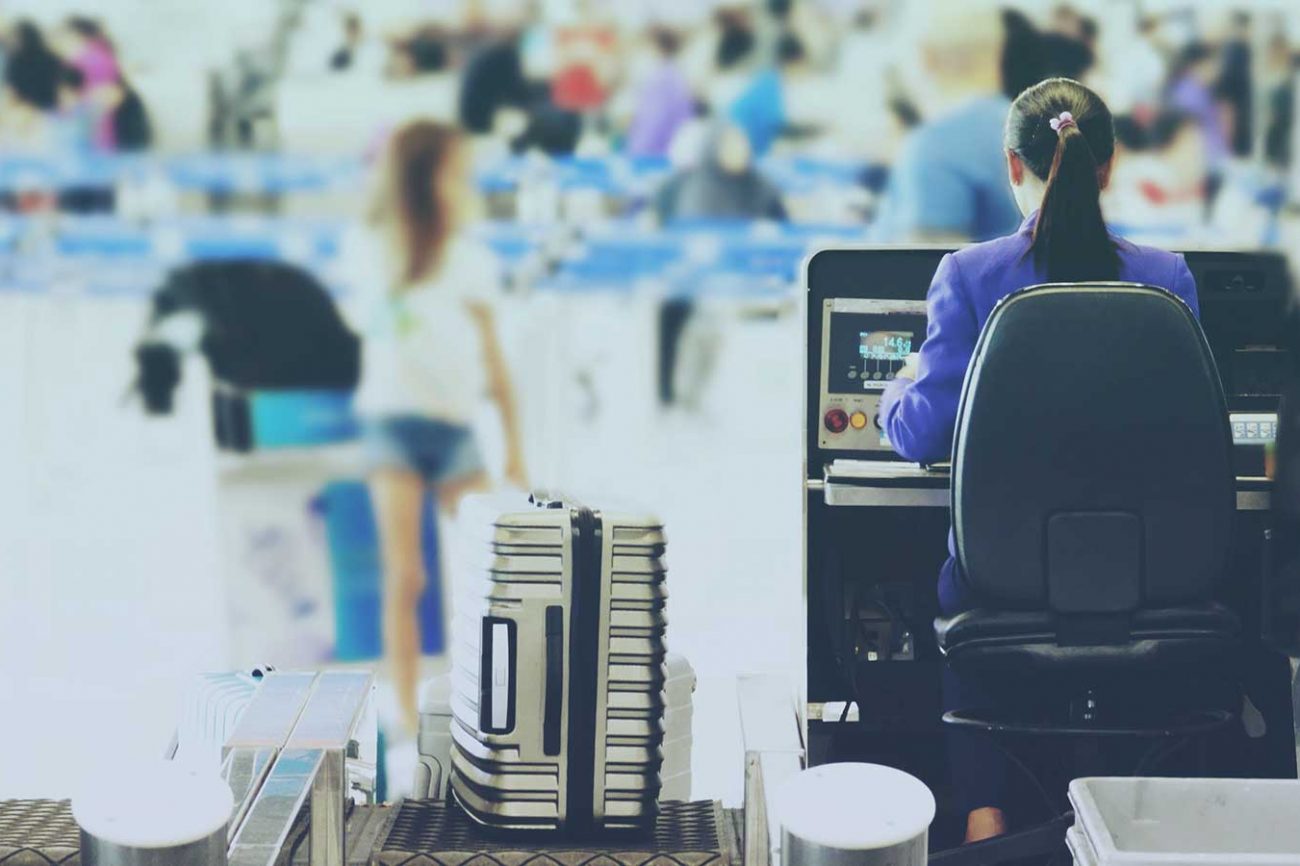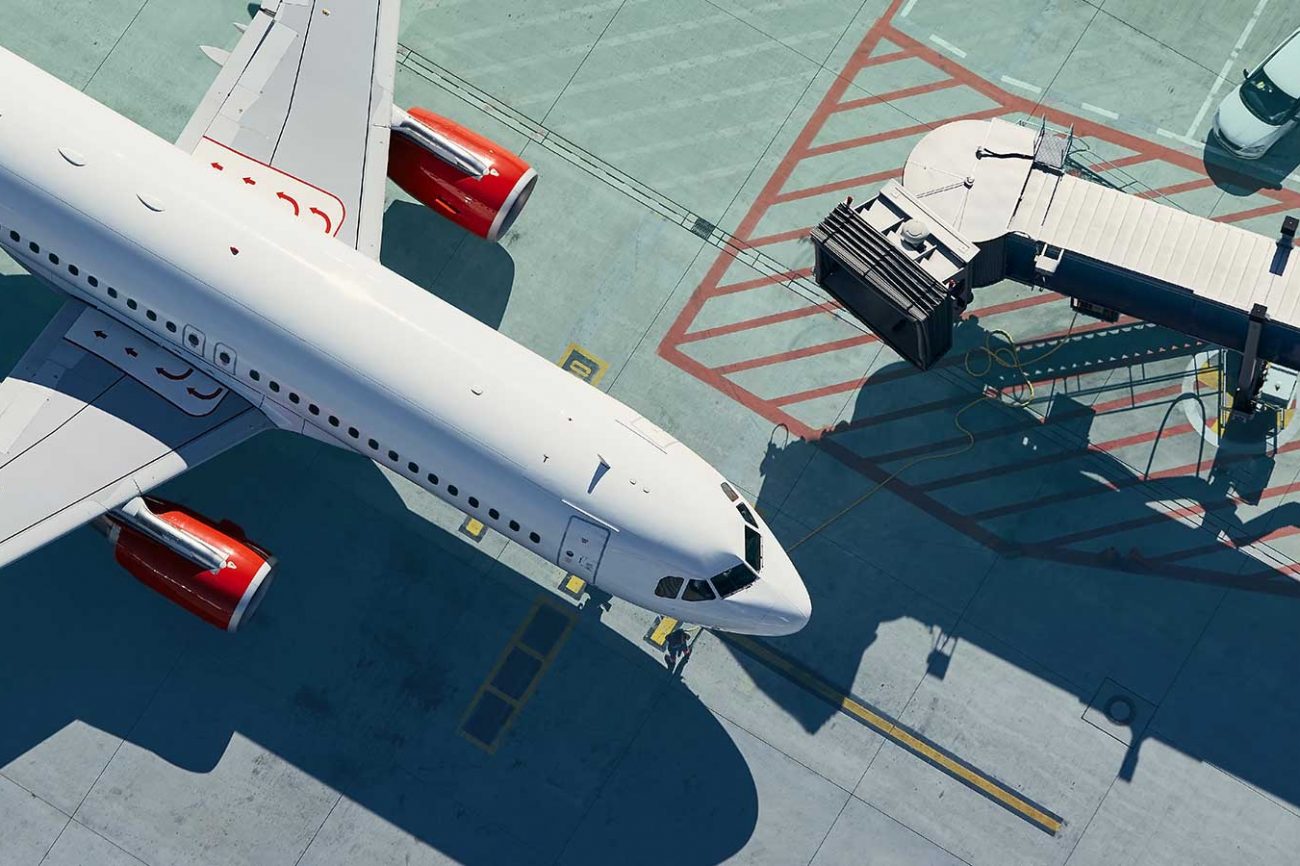[vc_row][vc_column][vc_column_text]
Three Reasons Airports Need a Passenger Wayfinding Strategy
[/vc_column_text][vc_single_image image=”1553″ img_size=”full” alignment=”center”][/vc_column][/vc_row][vc_row full_width=”stretch_row” bg_type=”image” parallax_style=”vcpb-default” css=”.vc_custom_1567163833988{background-position: center !important;background-repeat: no-repeat !important;background-size: cover !important;}”][vc_column width=”2/3″][vc_column_text]As an airport operator, ensuring smooth movement through your terminal buildings can be challenging. Onsite maintenance contractors need to be able to find their way around easily. Airline fleet and crew need to be able to navigate between terminals or piers. But most importantly, digital wayfinding is vital for passengers.
Even the most accurate physical signage can be impeded by a language barrier or lack of clear floor planning.
Whether departing, arriving or in transit, passengers must be quick and decisive in their movements to ensure timely arrival at the gate. Even with the most accurate signage or maps, communication can still be impeded by jetlag, language barriers or a lack of clear floor planning.
Here are three reasons airport operators need a dedicated passenger wayfinding strategy.
1) Managing the flow of passengers from the entrance to the departure
Consider King Fahd International Airport. With over 780 square kilometres of floor space in a six-story passenger terminal (World Atlas), the airport could easily prove a logistical nightmare for operators to maintain a smooth flow of passengers.
Passengers trying to navigate busy airports need a clear wayfinding strategy.
One wayfinding strategy, especially in a large airport, is integrating physical signposting and passenger announcements with digital technology:
[icon name=”plus” class=”” unprefixed_class=””] Leveraging the Internet of Things is key to bringing airport information and scheduling directly to on-the-go passengers. By syncing smart devices with virtual flight announcements and real-time terminal flow insight, passengers can plan their route more effectively from anywhere.
[icon name=”plus” class=”” unprefixed_class=””] Field branding specialists highlight the continued importance of traditional static signage in the future airport. Directions and noteworthy landmarks will remain part of the wayfinding strategy for passengers who may not understand digital strategies. Integrating physical signage and technology represents a resolution that satisfies all passengers. For example, traditional flight information display boards can be updated with walk-time estimations based on real-time data on bottlenecks in security queues or at check-in.
[icon name=”plus” class=”” unprefixed_class=””] Digital kiosks take that one step further and represent an excellent blend of the old and the new. Although in one fixed location that can be used as a landmark, they also can sync with passengers’ smart devices or boarding passes to provide personalised maps. These can include routes based on the quickest walking time, shopping preferences or specific requirements such as lifts for restricted mobility passengers.
2) Making your wayfinding passenger-centric
Airports that serve as vital transit centres will encounter a heightened version of a challenge that all airports face – developing a wayfinding strategy sensitive to the languages and cultures of various nationalities. Creating a culturally and linguistically diverse wayfinding strategy is essential to ensure that no matter where your passengers are from, they can make full use of your airport and stick to a schedule:
[icon name=”plus” class=”” unprefixed_class=””] Focusing on visual elements, like maps, arrows and guidelines, ensure that all passengers can understand instructions. The emergence of mobile apps that use terminal beacons or Wi-Fi technology to pinpoint locations and show directions are increasingly appealing.
[icon name=” plus” class=”” unprefixed_class=””] Using experiential and interactive technology can get passengers engaged with their wayfinding – a touch screen map in terminals, enabled with multiple language settings, can address confusion and anxiety over transiting.
[icon name=”plus” class=”” unprefixed_class=””] Using mobile wayfinding that updates in real-time, passengers can navigate on the go.
3) Get feedback
A research paper on Human Wayfinding from the University of Cardiff identifies terminal design, lighting, and even ambient music to directly affect passengers’ wayfinding abilities and experience in your airport. The International Airport Review says that Atlanta airport had the most commercial passengers worldwide in 2016, with over 104 million crossing the terminal floor. This massive number of people would have a trove of ideas about ways to improve your airport.
Looking to passengers for feedback on their experience in your airport means that you can tailor a wayfinding strategy to the people who have actively used your facility:
[icon name=”plus” class=”” unprefixed_class=””] At all your fixed wayfinding points (digital kiosks, interactive maps etc.), you should have the opportunity for passengers to leave their thoughts on your airport. Getting direct feedback can lead you to tailor a more comfortable passenger experience.
[icon name=”plus” class=”” unprefixed_class=””] Redesigning your airport with points of differentiation, including indoor gardens or rest spaces, gives passengers a more comfortable and memorable experience. It also means they have natural signposting for their wayfinding.
With soaring passenger growth, airport expansion and change are the only constants for both operators and passengers. Accurate, more personalised wayfinding is increasingly essential to help reduce passenger stress and ensure on-time departures. But with a diverse guest base, there is no one solution for airports. Instead, a toolset that leverages dynamic FIDS, digital kiosks and mobile app-based wayfinding connected to real-time passenger flow data will enhance your passengers’ travel experience.[/vc_column_text][vc_widget_sidebar show_bg=”false” sidebar_id=”sidebar_1″][vc_row_inner][vc_column_inner][/vc_column_inner][/vc_row_inner][/vc_column][vc_column width=”1/12″][/vc_column][vc_column width=”1/4″][vc_single_image image=”8164″ img_size=”full” alignment=”center” css_animation=”top-to-bottom” el_id=”open-newsletter-popup”]
[/vc_column][/vc_row][vc_row full_width=”stretch_row” bg_type=”bg_color” bg_override=”full” seperator_enable=”seperator_enable_value” seperator_type=”tilt_right_seperator” seperator_svg_height=”220″ seperator_shape_background=”#ffffff” bg_color_value=”rgba(42,210,201,0.05)” css=”.vc_custom_1519271452847{margin-top: 50px !important;padding-bottom: 100px !important;}”][vc_column][dt_testimonials_carousel dis_posts_total=”10″ content_layout=”layout_1″ content_alignment=”center” content_bg=”n” post_content_paddings=”30px 50px 20px 50px” img_max_width=”120px” img_border_radius=”500px” slides_on_wide_desk=”1″ slides_on_desk=”1″ autoplay=”y” post_title_font_size=”40px” post_title_line_height=”32px” post_title_bottom_margin=”5px” testimonial_position_font_size=”24px” testimonial_position_line_height=”28px” testimonial_position_color=”#2ad2c9″ post_content=”show_content” content_font_size=”17px” content_line_height=”27px” custom_content_color=”#253746″ content_bottom_margin=”0px” arrow_bg_width=”36x” arrow_border_width=”0px” arrow_bg_color=”#2ad2c9″ arrow_bg_color_hover=”#2fa8a1″ r_arrow_icon_paddings=”0px 0px 0px 0px” r_arrow_v_offset=”0px” l_arrow_icon_paddings=”0px 0px 0px 0px” l_arrow_v_offset=”0px” category=”10″ css_dt_testimonials_carousel=”.vc_custom_1563263131577{margin-top: 0px !important;background-position: center !important;background-repeat: no-repeat !important;background-size: contain !important;}”][/vc_column][/vc_row][vc_row full_width=”stretch_row” css=”.vc_custom_1567166018747{background-image: url(https://veovoforum.wpengine.com/wp-content/uploads/2018/12/veovo_homepage_background.jpg?id=2972) !important;}”][vc_column css=”.vc_custom_1567166044803{margin-top: 100px !important;margin-bottom: 100px !important;}”][vc_custom_heading text=”Plan. Predict. Perfect” font_container=”tag:h1|text_align:center|color:%23ffffff” use_theme_fonts=”yes” css_animation=”fadeIn”][/vc_column][/vc_row]


